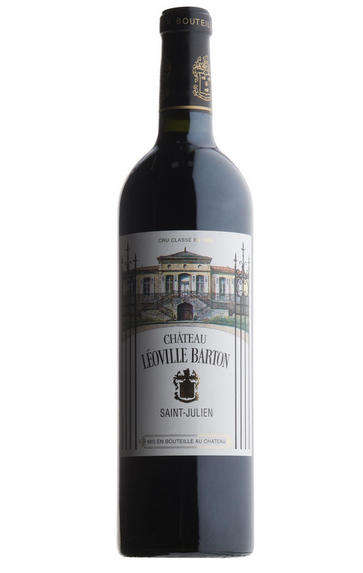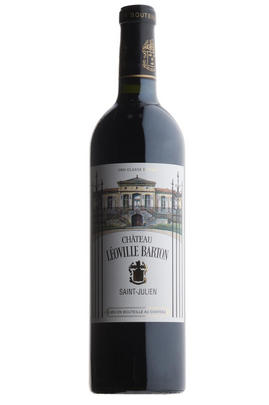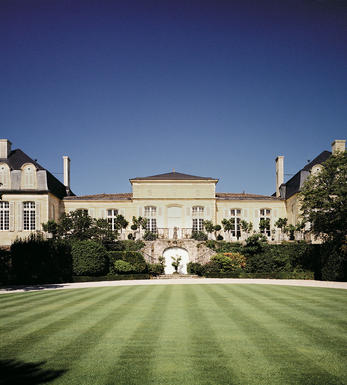
2016 Château Léoville Barton, St Julien, Bordeaux

Critics reviews
The 2016 Léoville-Barton has a more savoury bouquet than its peers: again, slightly tertiary in style, though very well delineated and manifesting lovely incense and pressed violet aromas with aeration. The oak is neatly integrated. The palate is medium-bodied with supple tannins, fleshy and ripe, and gently grippy, leading to a detailed and quite plush (for the vintage) finish. This is a charming Saint-Julien, a bit of a femme fatale.
Drink 2022 - 2040
Neil Martin, Vinous.com (August 2020)
The 2016 Léoville-Barton is fabulous. A wine of breadth and power, the 2016 has so much to offer. The black cherry, chocolate, gravel, smoke and liquorice flavours are all boldly sketched. A host of expressive savoury and mineral notes develop into the substantial finish.
Drink 2026 - 2046
Antonio Galloni, Vinous.com (January 2019)
A brilliant young wine, the 2016 Léoville Barton unwinds in the glass with aromas of cassis, dark berries and cigar box mingled with subtle hints of loamy soil. Medium to full-bodied, deep and concentrated, it's seamless and exquisitely balanced, with beautifully refined tannins, bright acids and a long, penetrating finish. Its structural refinement is such that it's far from forbidding to open right now, yet patience will be richly rewarded.
Drink 2026 - 2066
William Kelley, Wine Advocate (August 2022)
Dark blackish purple. Less obviously aromatic than Langoa. Tea-leaf notes. Round texture with gloriously ripe tannins. Really a standout Barton. So unusually supple! Yet with masses of tannins underneath. This will surely be one of the vintage's longer-living wines. Glorious texture and flavour. Utterly minerally dry, but not drying. Very good freshness – much fresher than many of its peers. Real energy.
Drink 2027 - 2047
Jancis Robinson MW, JancisRobinson.com (April 2017)
A blend of 86% Cabernet Sauvignon and 14% Merlot.
Terrific intensity of dark berries, almost peppery blackcurrants and violets with attractive and integrated, spicy oak and an earthy edge. The palate has a super powerful and long, linear core with plenty of fruit flesh strapped in tight for a long and thrilling ride into the finish.
Try from 2024
James Suckling, JamesSuckling.com (December 2019)
Intense, luxurious, fresh yet also very classically Bordeaux on the nose. Loads of dark berry and currant fruit allied to a touch of oaky spiciness. Density on the palate but also refined, elegant, and smooth.
Drink 2021 - 2045
Ronan Sayburn MS, Beth Willard, Andy Howard MW, Decanter.com (October 2020)
The blend of the 2016 is 86% Cabernet Sauvignon and 14% Merlot, brought up in 60% new French oak.
Deep purple-coloured and a classic Saint-Julien with its pure crème de cassis, graphite, liquid rock, and essence of lead pencil shavings, the 2016 Château Léoville Barton is full-bodied, concentrated, and backwards, with bright acidity and ripe yet certainly present and building tannins. This old-school, classic Léoville Barton has a fine thread of acidity keeping the wine focused and fresh. It’s a beauty, but mostly potential at this point, although it does have beautiful fruit. Savvy readers will hide bottles at the back of their cellar, and I wouldn’t start to think about opening bottles for a least a decade. It’s going to be incredibly long-lived.
Drink 2029 - 2069
Jeb Dunnuck, JebDunnuck.com (February 2019)
About this WINE

Chateau Leoville Barton
Château Léoville Barton is the smallest portion of the great Léoville estate and has been owned by the Barton family since 1826. There is no château and the wine is made at Langoa Barton.
Léoville Barton's 48 hectares of vineyards are located in the east of the St-Julien wine appellation and lie on gravelly-clay soils. They are planted with Cabernet Sauvignon 72%, Merlot 20%, Cabernet Franc 8%. The wine is matured in oak barriques (50% new) for 18 months.
Eighth and ninth-generation family members Lilian and Damien Barton took over the reins here in 2022, after the death of Anthony Barton. Anthony was responsible for the quality at Léoville Barton soaring; his tenure saw the wine changing from a solid, mid-performing 2ème Cru Classé to one of the most exciting and scintillating wines in St. Julien. Under Lilian and Damien’s care, business at the château is better than ever.
Léoville Barton is tannic and austere in youth but with time develops the classic cedary character that is the hallmark of St. Julien, along with intensely pure blackcurrant and cassis fruit notes. Léoville Barton's wines are made for extended cellaring and tend to show at their best with 10-15 years of bottle ageing.

St Julien
St Julien is the smallest of the "Big Four" Médoc communes. Although, without any First Growths, St Julien is recognised to be the most consistent of the main communes, with several châteaux turning out impressive wines year after year.
St Julien itself is much more of a village than Pauillac and almost all of the notable properties lie to its south. Its most northerly château is Ch. Léoville Las Cases (whose vineyards actually adjoin those of Latour in Pauillac) but, further south, suitable vineyard land gives way to arable farming and livestock until the Margaux appellation is reached.
The soil is gravelly and finer than that of Pauillac, and without the iron content which gives Pauillac its stature. The homogeneous soils in the vineyards (which extend over a relatively small area of just over 700 hectares) give the commune a unified character.
The wines can be assessed as much by texture as flavour, and there is a sleek, wholesome character to the best. Elegance, harmony and perfect balance and weight, with hints of cassis and cedar, are what epitomise classic St Julien wines. At their very best they combine Margaux’s elegance and refinement with Pauillac’s power and substance.
Ch. Léoville Las Cases produces arguably the most sought-after St Julien, and in any reassessment of the 1855 Classification it would almost certainly warrant being elevated to First Growth status.
Recommended Châteaux: Ch. Léoville Las Cases, Ch.Léoville Barton, Ch Léoville Poyferré, Ch. Ducru-Beaucaillou, Ch Langoa Barton, Ch Gruaud Larose, Ch. Branaire-Ducru, Ch. Beychevelle

Cabernet Sauvignon Blend
Cabernet Sauvignon lends itself particularly well in blends with Merlot. This is actually the archetypal Bordeaux blend, though in different proportions in the sub-regions and sometimes topped up with Cabernet Franc, Malbec, and Petit Verdot.
In the Médoc and Graves the percentage of Cabernet Sauvignon in the blend can range from 95% (Mouton-Rothschild) to as low as 40%. It is particularly suited to the dry, warm, free- draining, gravel-rich soils and is responsible for the redolent cassis characteristics as well as the depth of colour, tannic structure and pronounced acidity of Médoc wines. However 100% Cabernet Sauvignon wines can be slightly hollow-tasting in the middle palate and Merlot with its generous, fleshy fruit flavours acts as a perfect foil by filling in this cavity.
In St-Emilion and Pomerol, the blends are Merlot dominated as Cabernet Sauvignon can struggle to ripen there - when it is included, it adds structure and body to the wine. Sassicaia is the most famous Bordeaux blend in Italy and has spawned many imitations, whereby the blend is now firmly established in the New World and particularly in California and Australia.


Buying options
Add to wishlist
Description
The blend of the 2016 is 86% Cabernet Sauvignon and 14% Merlot, brought up in 60% new French oak.
Deep purple-coloured and a classic Saint-Julien with its pure crème de cassis, graphite, liquid rock, and essence of lead pencil shavings, the 2016 Château Léoville Barton is full-bodied, concentrated, and backwards, with bright acidity and ripe yet certainly present and building tannins. This old-school, classic Léoville Barton has a fine thread of acidity keeping the wine focused and fresh. It’s a beauty, but mostly potential at this point, although it does have beautiful fruit. Savvy readers will hide bottles at the back of their cellar, and I wouldn’t start to think about opening bottles for a least a decade. It’s going to be incredibly long-lived.
Drink 2029 - 2069
Jeb Dunnuck, JebDunnuck.com (February 2019)
wine at a glance
Delivery and quality guarantee